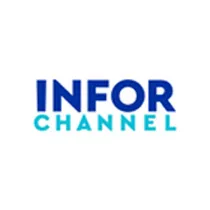The platform for managing Data Containers, developing Cloud-native applications and modernizing legacy workloads solidifies. To make a parallel with the Star Trek spacecraft, from the legendary science fiction series created by Gene Roddenberry, Kubernetes and its Open Source properties unite 'competing races' in a goal close to the good of civilizations…, or in this case, of customers
The weird name, at first, caught our attention: Kubernetes. Still recent, its seven-year history already has a strong presence in the market when it comes to Data Orchestration that automates, scales and generates applications in Containers. Born and raised in the cradle of Google, his story goes back to the Star Trek series (read below The beginning of everything), but he soon had his tutelage linked to the Cloud Native Computing Foundation, an organization that brings together IT giants.
That is, Kubernetes has become a standard especially in Platform as a Service, PaaS and Infrastructure as a Service, IaaS architectures and, as we will see, it brings together a good number of suppliers with a heterogeneous background. But what matters is how it works, how the market is moving in your direction. Also, how Channels can earn dividends from it.
It has become increasingly common to consume Kubernetes as a service, offered by a cloud provider.
Its reach – as it is an Open Source-based service, its dissemination is facilitated – is already interesting, but there is still a lot of room for growth, especially with the migration to Cloud infrastructure carried out by many companies as a result of the pandemic.
Due to the need for remote work, hybrid work and the great demand for Electronic Commerce and other virtual services, some Brazilian companies are taking advantage of the redesign of their Cloud environments to use Kubernetes, defined as the ideal way to optimize, automate and have more scale your operation through this Container orchestration format. This more agile model starts with Containers technology, which is a way to package an application and all of its dependencies. And to run quickly and reliably in different types of environments – be it a laptop or traditional Data Centers and even the Clouds and Edge – Kubernetes was created.
“The goal of Kubernetes is to automate many manual processes in IT, related to the deployment, management and scaling of enterprise workloads based on these repositories as a way to better orchestrate Containers”, explains Thiago Araki, Director of Technology for Latin America at RedHat. Currently, the company is the second largest contributor to this project, and from their collaboration, OpenShift, a platform for enterprise Containers, emerged.
Kubernetes has become standard especially in PaaS and IaaS architectures
According to the company, OpenShift is used by more than three thousand organizations worldwide, including 90% of the Fortune 500 companies and several companies in Brazil. According to research firm Omdia, in a study earlier this year, Red Hat commands 47.8% of the market for this technology.
Other protagonists
Even Microsoft joined and has a strategic vision. “The use of Kubernetes goes far beyond data management. Thus, new applications and updates can be implemented without the need to search for periods of lower peak in the company's operations. Kubernetes itself, in case of failure, undoes the entire process automatically as a way of not interrupting services to internal customers (employees) or external customers (end consumers)”, explains Rodolpho Ugolini, Marketing Manager of the Azure platform, which offers customers the Azure Kubernetes Service, or AKS.
Among the clients, Riachuelo stands out in the construction of Rchlo+ – a space for customizing parts by clients; Indikatore, which offers intelligent Supply Chain solutions for Retail; and Omnilogic.
Google, the 'father of the child', runs all its platforms, such as the Google Cloud division, within the premise of Containers using Kubernetes. “This helps our development teams to evolve quickly, implement software efficiently and operate at an unprecedented scale”, the advisory responded to our request for an interview on the subject.
The Google Kubernetes Engine, for example, is considered a fundamental part of the PIX solution developed by the startup Bit Capital. In her solution environment, she has 20 clusters with more than 1,500 pods and 250 GB of monthly data. A robust structure to support a service that involves intense periods of requests, such as Black Friday.
Another case highlighted by the company is that of Natura, which used the Google Kubernetes Engine platform to test assets in virtual environments based on algorithms customized by the company itself. In the model, a virtual molecule was created – from a substance, a real asset – in an environment in which the interactions it can undergo are simulated, such as temperature variations or contact and absorption with water.
There is a lot of room for growth, especially with the migration to cloud infrastructure
In short, companies of any size and profile can make use of Kubernetes. Although, in the beginning, most companies installed it in their Data Centers. But as it has become increasingly common to consume Kubernetes as a service, offered by a cloud provider, it has become mainstream; allowing companies with less computational capacity or internal resources to operate this type of technology to also benefit from Container technology.
Cloud, the initial frontier
It is easy to find startups and cloud-native companies that have already embarked directly on using Kubernetes. One example is Skyone Solutions. “All new products are created with a view to implementing them in Containers and Kubernetes. One of the main use cases is our multi-cloud system that is managed by Kubernetes and we have the same application running on more than one Cloud quickly and easily”, points out Rennan Sanchez, co-founder and CTO of Skyone Solutions.
Almost every technology company is getting involved with Kubernetes in one way or another. Developers, for example, in their daily lives, as it becomes simpler and with less possibility of failures. For integrators and service providers, Kubernetes has become the most complete solution currently on the market for orchestrating Containers.
Because it is an Open Source solution, it has an ecosystem of professionals and companies that aim to use and improve it as a way to support innovation in the market and, thus, Kubernetes continues to advance to other frontiers.
Microsoft, for example, has an ecosystem of 25,000 partners in Brazil alone. “Each partner has services and solutions that are their specialty and a highly qualified team that not only makes the sale, but also understands the business and its infrastructure needs, carries out the design together with the teams, the implementation process, the training of the customers themselves, as well as the support of the technologies”, enthuses Danni Mnitentag, vice president of Partners and Channels at Microsoft Brazil. Partners help bring the AKS idea to market.
Containers will be the default choice for 75% of new enterprise applications by 2024
As a profile, the Microsoft Channel has a strong investment component in the qualification and technical capacity of its professionals, working from the moment the solutions are sold to the implementation, maintenance and management of workloads and services coupled to Azure. In all, more than three million training courses were delivered and more than 96,000 certifications were delivered within the partner program, the Microsoft Partner Network.
Exploring possibilities
A direct competitor, Red Hat has more than a thousand Channels that can sell and implement its solutions. In technologies such as Openshift, partners have been trained and understand how to identify the need to implement the solution for current and future customers. “Everyone was trained with courses and workshops, on the entire model we have within the Channels area, and knows how to prepare an architecture to incorporate the Kubernetes and Containers part, offering this possibility and adding value to customers”, explains Sandra Vaz, director senior of Alliances and Channels for Latin America at Red Hat.
The company, as well as the market in general, has several Channel profiles in its ecosystem. And classifies them into Premier, Advanced and Ready categories. To achieve each of them, partners undergo a series of training sessions with specialists. As a complement, there is a team managed by company executives, called Partners Alliances Managers, who support customers in building a business plan, uniting the expectations of the partner and Red Hat.
This investment includes an agenda of digital and face-to-face training, which serves to closely monitor the certification and evolution of each partner. They undergo training so that they can sell not only subscriptions but also services. “The idea is to prepare the Channels team so that they have a consultative sales profile, understand the customer's business needs, their Cloud infrastructure and also know all the technological trends to support them in their evolution to multicloud”, Complete Sandra.
♦ Distributors going further
This journey also involves distributors, especially those that operate heavily with integration partners. They want to carve out their space in this Kubernetes scenario. “Even with a lot of adoption, it is still a technology that companies are learning about and accelerating in projects and use. Mainly those that come from a legacy environment, with applications running in the traditional model”, ponders Álvaro Rezende, Latam Platform & Services Owner at TD Synnex for Latin America and the Caribbean, which sells the Azure, Amazon and IBM platforms, among others.
As a strategy, the executive explains that the distributor's engineers and architects have the knowledge so that, when they find a business opportunity, they can identify and offer the benefits of Kubernetes to the customer and partners. “The motor for projects today is the modernization of applications and the allocation of systems in the Cloud. The challenge of moving that legacy application is very common”, he admits.
In less than three years, this market should jump from US$ 465.8 million to US$ 944 million
And it draws attention to the role of the Channels in the process. “Partners are the key to a successful experience for end customers using technology. The customer expects support from the partner in their digital transformation journey, especially with so many topics in technology at the same time”, he guarantees. In summary, the Channel must act as a consultant to the client and deliver a modern offer, with high availability and great cost-effectiveness.
To assist Channels, TD Synnex constantly runs webinars to share knowledge with partners. And it provides several trainings on K.NOW! – the distributor's official teaching platform -, and at no cost.
The distributor Pars has emphasized market education with its business partners, demonstrating the benefits of technology through training and workshops. It maintains the focus on demonstrating the solutions, their benefits and, in a second moment, directs to a more technical approach, so that companies understand how the tool works and what infrastructure is needed to support it.
“We have casein the financial sector, the last one, including with the PIX. The technology of one of our partners is capable of supporting 2,500 PIX transactions every four seconds. Many people think that PIX is just sending and receiving money, but there is a whole range of solutions capable of supporting the volume of these transactions”, argues Raphael Militino, Solutions Architect at Pars.
The role of the Pars Channels is to take what is new on the market to its end customers, with the distributor as a support arm in this process, both in sales and in training the Channel itself. Partners that do not have a marketing or pre-sales structure have support so that they can capture and deliver the best project to the end customer. “Our Channel needs to have a minimum knowledge of the platform and participate in training offered by suppliers”, he recalls.
The future, the final frontier
With rapid advances, the result of greater maturity and the involvement of many companies in the development of Kubernetes, currently almost any type of workload is suitable for it, including traditional applications, Databases and even Big Data and Machine Learning.
On the other hand, some types of systems - large monolithic applications such as ERPs and CRMs -, although they can work on Kubernetes, usually do not extract as many benefits, as they are systems that do not scale well on demand and often do not even need to be portable between environments.
But what to expect for 2022 and beyond? “New tools emerge every day that help in the administration of Kubernetes clusters, so we can expect next year or in 2023 the improvement of the native Kubernetes dashboard and the increasingly massive investment by Cloud providers to provide an increasingly better service ”, projects Sanchez, from Skyone Solutions.
However, making predictions in the world of technology can be difficult, especially in the medium term. “It is plausible to predict that the adoption of Containers and Kubernetes will only increase. The big driver is the digital transformation initiatives in companies, which are placing application development at the center of IT and business strategy”, points out Araki, from Red Hat.
As for projections, according to Gartner, Containers will become the default choice for 75% of new enterprise applications by 2024. That is, three out of four large enterprises in mature economies will use Containers in production, versus less than 35% today . Something like more than doubling the market in less than three years, jumping from US$ 465.8 million to US$ 944 million. It is possible to imagine a rich continuation of this story.
♦ The beginning of it all
The official story is always told by the winners, never by the losers. Therefore, history is always full of heroism and effort or the reinforcement of one's own trajectory.
What is known is that the original codename for Kubernetes within Google was 'Project Seven', most likely a reference to the character from the science fiction series Star Trek, Seven of Nine, who is a Borg, or an individual from a pseudo- kind of cybernetic organisms shown in the fictional universe.
Thus, the seven spokes of the wheel in the Kubernetes logo would be a reference to that codename. Another source says that Kubernete is timon in Greek, but we haven't found anything to prove that.
What is certain is that the first version of Kubernetes was released on July 21, 2015. And, parallel to the launch, Google in partnership with the Linux Foundation created the Cloud Native Computing Foundation Cncf, to offer the technology to the market in a more comprehensive and as an open platform.
♦ And here comes another story
In the past decade, several Container Orchestration technologies competed with Kubernetes, including: Mesos, Docker Swarm and Cloud Foundry. However, due to its capacity, popularity and the creation of the Cloud Native Computing Foundation, Kubernetes ended up becoming the de facto standard for repository management.
Currently, dozens of technology vendors and cloud providers have offerings based on this project and provide certified or complementary solutions to Kubernetes, which is the second fastest growing Open Source project in history, behind only Linux.
Where the news was published:
Source: https://inforchannel.com.br/2021/10/25/kubernetes-rumo-a-nuvem/




